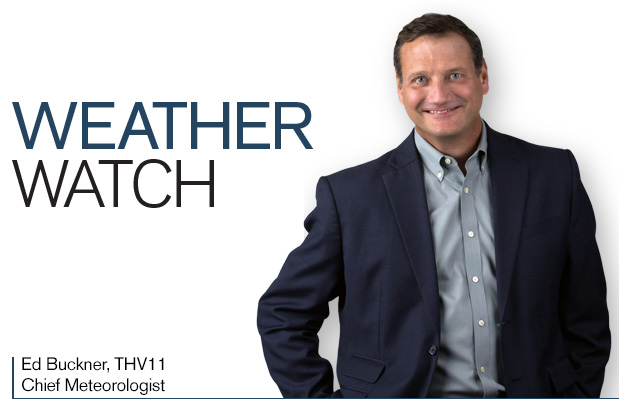What I Love About Summer

In my 23 years as Chief Meteorologist at THV11, I’ve noticed that the most active weather happens between December 1 and May 31. From winter storms, sleet, snow and ice to severe thunderstorms and tornadoes in the spring, it’s a busy six months.
However, come June 1st, Mother Nature (usually) begins to calm down. While heat and pop up storms are usually the only things to worry about, there is another summertime feature that can keep us on our toes. More on that in a bit.
First, I want to talk about memories of summer. June is one of my favorite months, mainly because of childhood memories. My Dad’s birthday was June 16, mine is June 17. These dates always fall on or very near Father’s Day weekend.
The calm, but hot weather combined with family get-togethers and cookouts still brings a smile–as do the ugly ties I bought my father. While my mom and dad are no longer here, the memories come back to life with my own family and children each Father’s Day weekend.
It’s not just my birthday and Father’s Day that are nice. June is the first month after a long stretch of weather when I can relax a little, take some time off and maybe head to the beach, with everyone else of course. I don’t like the term “put the weather on auto-pilot,” but often that’s what summer brings.
The main weather concern during the summer months are heat-induced thunderstorms. They can pop up anywhere and bring strong winds and large hail. They don’t happen as often as springtime storms, but they can prove intense and severe.
Another weather phenomenon that we must watch for is called “Derecho,” pronounced “deh-REY-cho”. A derecho is a widespread, long-lived wind storm associated with a band of rapidly moving showers or thunderstorms variously known as a squall line, bow echo, or quasi-linear convective system.
Although a derecho can produce destruction like that of a tornado, the damage typically occurs in one direction along a relatively straight swath. As a result, the term “straight-line wind damage” sometimes is used to describe derecho damage. A derecho must include wind gusts of at least 58 mph (50 knots or 93 km/h) or greater along most of its length. While derecho winds typically are less than 100 mph, gusts as high as 130 mph have been recorded–equivalent to those of strong EF2 tornadoes.
These widespread complexes of thunderstorms feed off the warm, humid air of summer. They usually form to our west or northwest in the central plains and move into Arkansas in a west or northwest upper airflow. They can happen anywhere from the Rocky Mountains to the east coast. They are not exactly common, but they do happen and comprise another main severe weather threat of summer.
So, here’s to a wonderful, hot and hopefully quiet summer. Sit back and enjoy and embrace the heat. I know I will! ν










0 comments